26-28 April 2022
I have visited Pisa on several occasions, most often not further than its famed Leaning Tower. It wasn’t until I wandered into some of its smaller, quieter streets that I discovered Pisa’s charm. I determined to return and spend more time exploring something other than its Piazza del Duomo.
The province of Pisa is Tuscany’s fifth largest, which is to say it is far from crowded, especially once one walks beyond the Leaning Tower. With a history which dates back to the mysterious Etruscans, Gauls, and Semitic-speaking Phoenicians, Pisa was a center of maritime power and influence throughout the 12th and 13th centuries. Its navy controlled the western Mediterranean and its soldiers kept the Moors at arms-length.
Pisa is best known for its Duomo completed in 1092, the Baptistery completed in 1363 and the largest in Italy, the cloister and cemetery, and the Duomo’s free-standing campanile which, because of its lean, has become the iconic symbol of the city. Completed in 1372, because of an unstable foundation the 183’ campanile began to lean almost at once. The lean, by 1990, amounted to 5.5 topple-defying degrees. (In 1993 efforts to stabilize the tower reduced the tilt to 3.97 degrees.) Perhaps the lean is why little is spoken of its architect. However, the Tower became the main draw for tourist so perhaps the architect should be given more credit. Pisa also drew Galileo who lived here in 1590 and used the tower for dropping cannonballs to further his experiments in the law of gravity.
My first trip to Pisa was 1972. I climbed the 296 steps to the top. The view of the city’s red tile rooftops, surrounding plains and Apennine mountains was beautiful. My experience was more than memorable. When winding up the stairs, I did not need cannonballs to feel the pull of gravity. That 5.5-degree tilt was physically unmistakable. There were few impediments between me and thin air. Scores have leaped to their deaths over the years. My experience gave me nightmares for years.
Today, I explore other sites in Pisa starting with its ancient walls and cittadella. Show me a medieval walled city and I am immediately enchanted. Pisa’s walls, or mura, were built between 1155 and 1161, the oldest city walls in Italy to remain mostly intact. The wall is dotted with towers, bastions and gates. At over 36 feet in height, I would love to walk its length. However, it is only open weekends. I did note that the wall to the west seems to be in much better shape. Pisa purposely not restoring certain sections?
The Bastion of San Giorgio is one of several fortification along the walls. Built at the end of the 15th century, alongside the even older 13th century Torre del Canto, the bastion was meant to strengthen security. Here is a gate with drawbridge and cannon vents. Look closely and one can see a slight lean to the structure. Within a few yards are the towers Sant’Agnese, Ghibelline, and Guelph. This area housed an arsenal and workshops where ships were built and repaired. Now there are parks, museums, shops and cafes.
Of course, open for exploration are numerous museums, more than 20 historic churches, several medieval palaces, and five bridges across the Arno, mostly financed by Pisa’s maritime trade and political connections to the Medici family. No bridge is that memorable except possibly the Mezzo at the end of Piazza XX Settembre. While I was there, huge crowds gathered to see a couple paragliders land.
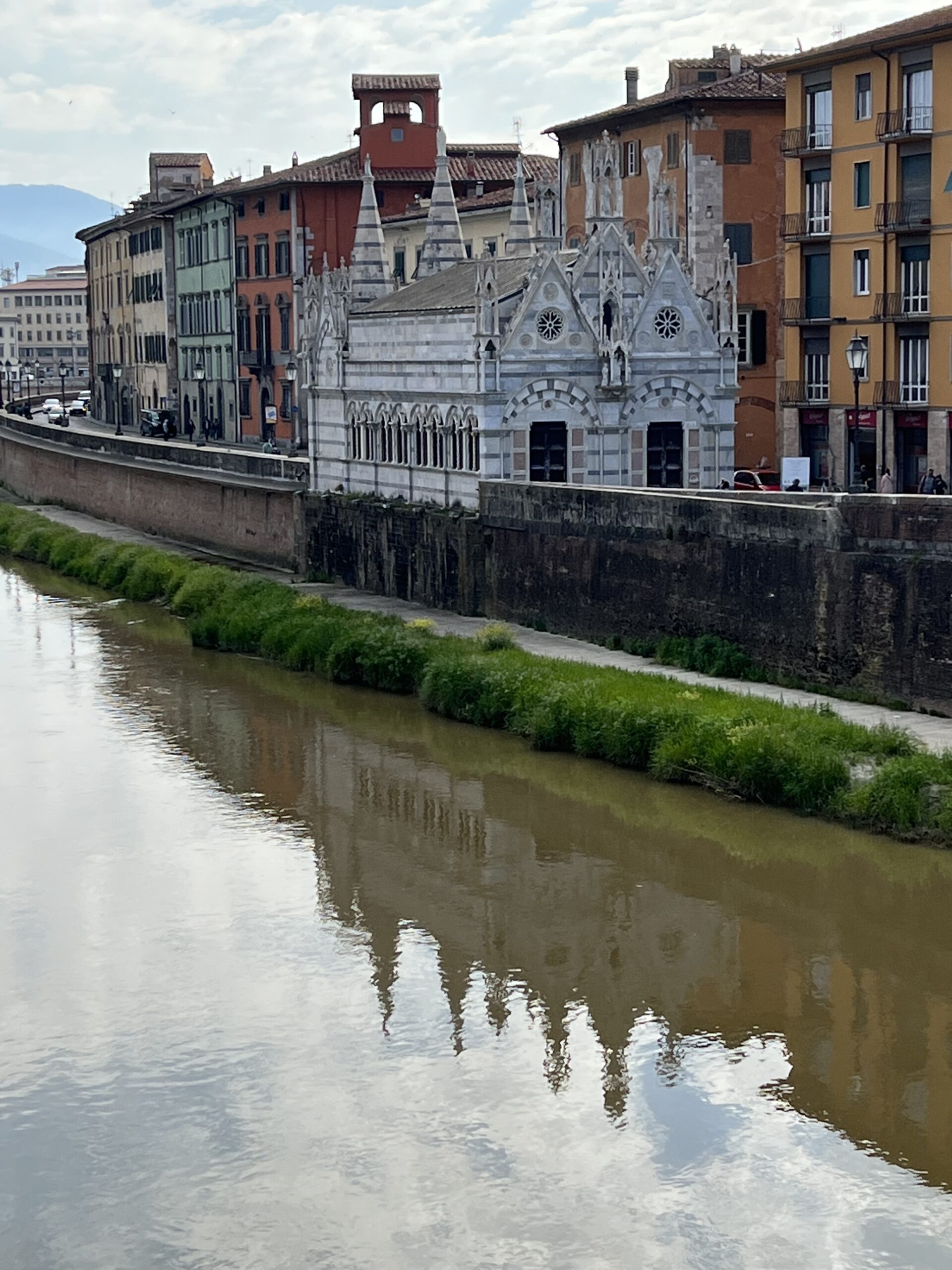
The intimate Santa Maria della Spina beside the Arno is a tiny jewel of gothic. The 16th century Santo Stefano in Piazza dei Cavalieri is created in a mannerist style, meant as a rebellion against the more ornate flourishes of Renaissance and classical buildings. It comes off as pleasant but unremarkable. I like the gothic and the ornate. The 11th century Romanesque church of San Paolo a Ripa along the Arno was worth a stop, as was the more ornate San Nicola with its own leaning bell tower. I failed to ever see Santo Sepolcro open but the outside is a wonderful example of medieval brick and stone architecture in the style of a rotunda.
The Piazza dei Cavalieri not only contains Santo Stefano church but the stunning Palazzo della Carovana. Home to the Knights of St. Stephen, the palazzo was finished in 1564 and its ornate façade is an intricate display of zodiac signs, allegorical figures and ducal busts. Central to the sculptures are the coat of arms for the Medici and the Knights. Meanwhile, it overlooks a rather dull and quiet square with not a café in sight.
An uncrowded stroll takes me along the Arno, through the city gates, across Pisa’s historic bridges, to pause at classic statues of Leopold I, Vittorio Emanuele II, Galileo, Cosimo de’ Medici, and a few men I don’t know. In all my travels, it is very seldom I see statues of women. Men: the mighty warriors, stern rulers, successful scientists, cartographers, writers, painters, ad infinitum. No women.
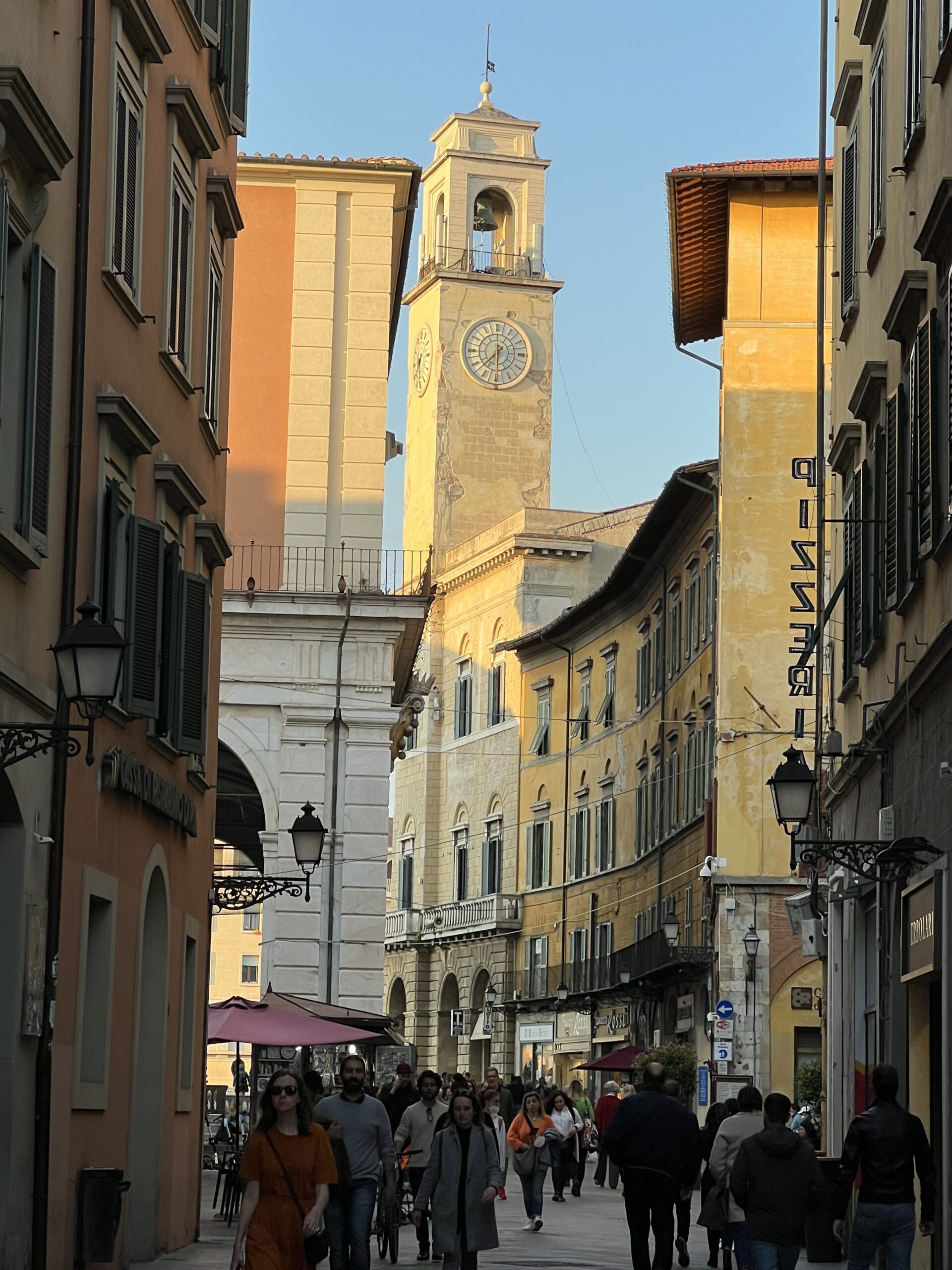
The Palazzo Blu is a charming 14th century palace, now art museum, which overlooks the Arno. Its name comes from the discovery, during cleaning and restoration, that 18th century Russian owners must have had a love for blue. It is quite colorful and its exhibitions occupy a pleasant hour. Some of the rooms are quite beautiful and house both notable artists and photographers. The Rainbows for Africa project documenting the humanity of Nairobi’s slums was excellent as was Storiemigranti about asylum seekers and political refugees.
The Museo Nazionale di San Matteo operates on very restricted hours. Its works span from early medieval times into the 16th century and includes pieces by Nicola Pisano, Giunta Pisano, and Donatello (the best of which was out for restoration). There are also some beautiful illuminated manuscripts.
Nearby to the Museo Nazionale is the Palazzo Vecchio de’ Medici. Erected during the 11th century, this marvelous home was the residence of Cosimo de’ Medici and others of his historic and extremely influential family. Now, the Palace is part of the church and convent of San Matteo and literally drips with history and famous personages. The present facade was commissioned by the Morganic daughter (from a marriage between a royal family and a person of inferior rank) of King Vittorio Emanuele II and is designed in a Gothic revival style with mullioned windows and even its own tower. While the interior is not open to lookie-loos (it acts as government offices) the tower is sometimes open.
Strolling the left bank (south of the Arno) or right bank (north of the Arno) feeds my appetite for architecture, old palaces and tidbits of history. Some say the simple renaissance style of the Toscanelli Palace was the work of Michelangelo. Intimate piazzas are tucked everywhere. Plaques and stones tell the history of the buildings and statues. Pisa is also a university city and home not only to the University of Pisa which dates to the 12th century but also the Scuola Normale founded by Napoleon in 1810. The Botanical Gardens, founded by Cosimo de’Medici in 1543 is supposedly the most ancient botanic garden in the world. It does have a couple nice bamboo forests.
Distractions abound as I stroll the old city’s streets, literally, because along many streets there is no sidewalk of any depth. Not all is perfect per Pisa. But it’s uncrowded. Well, except at the Tower where a tourist crashed his drone into its marble side today, and for those watching for the paraglider to miss his mark and land in the river which he didn’t. Policemen abound around the Tower but doubt they will see the next drone unless they get off their mobiles.
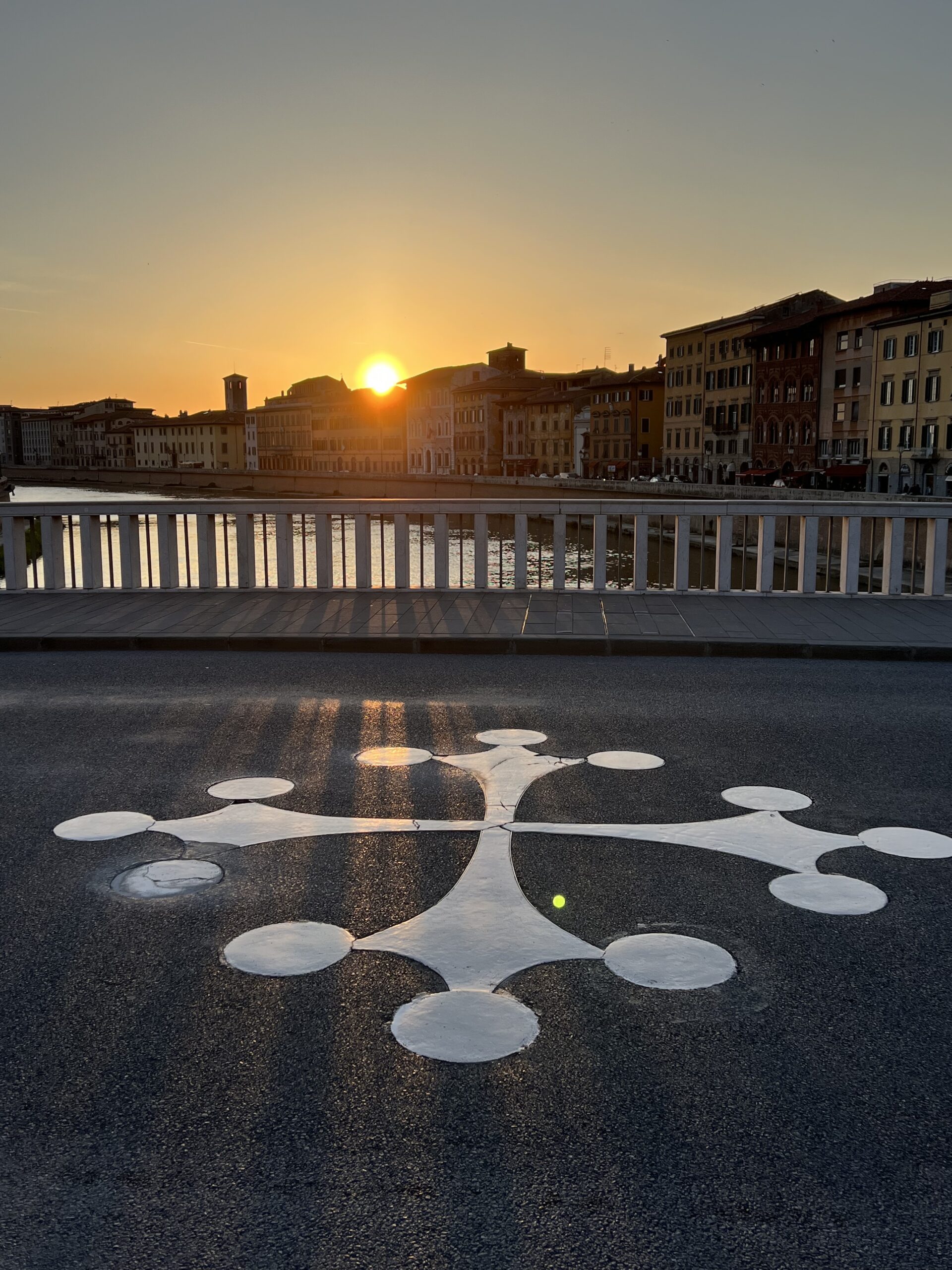
Like all Italian towns, there are numerous architecturally interesting piazzas for people watching and relaxing, along with the popular shopping, dining and strolling streets of Corso Italia and Borgo Stretto. Away from the crowded Piazza del Duomo, and especially after the day trippers depart for Florence, Pisa becomes a charming village of neighborhood piazzas, cafes and pubs, and reminds visitors to explore more than a poorly constructed tower.
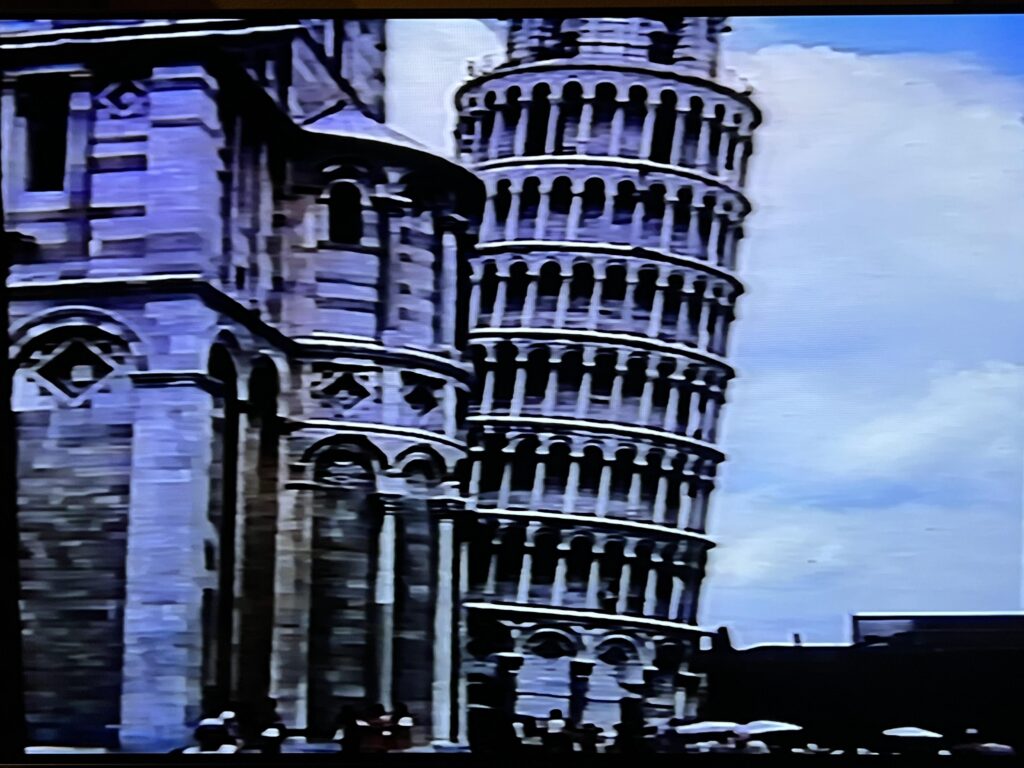
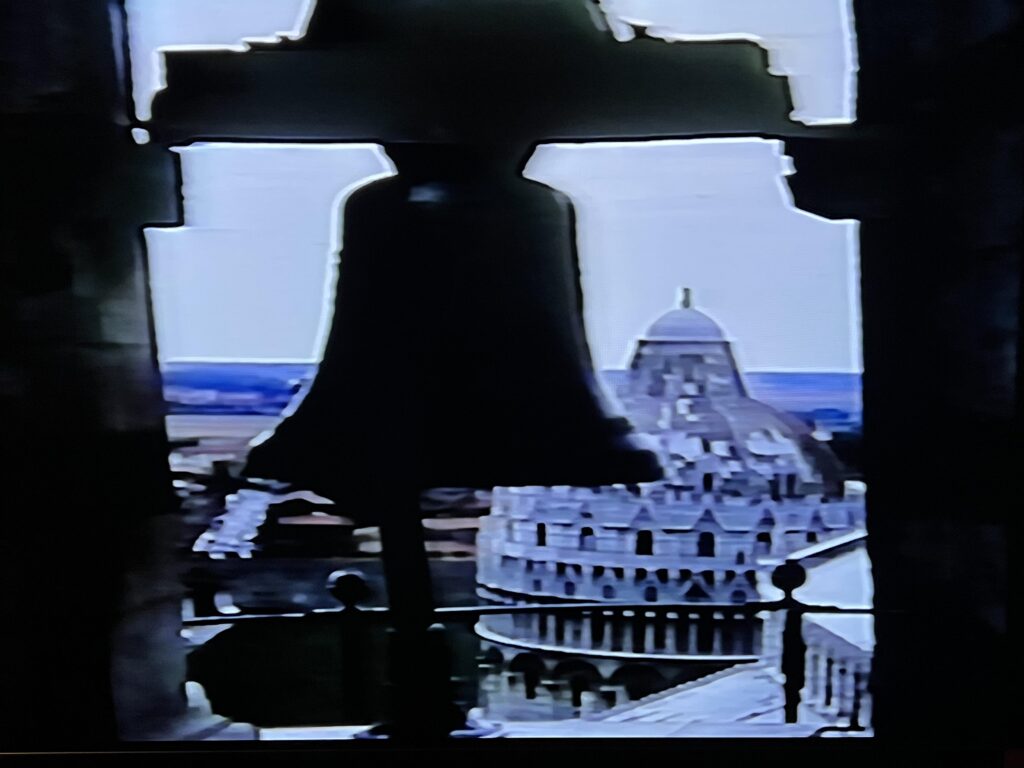
0 Comments